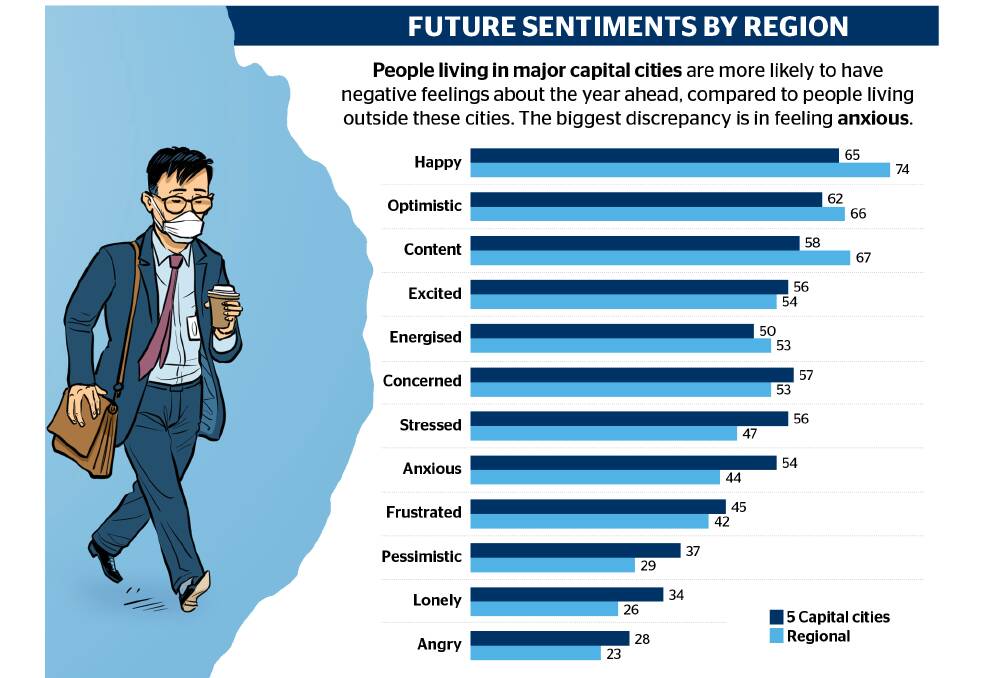
At ACM our mission, and the mission of each of our 140 mastheads around the country, is to keep our communities strong, informed and connected.
Our printed newspapers have been doing this in some cases for well over 150 years.
Our network of local news websites is adding new subscribers every day through breaking news alerts, newsletters, apps, search engines and social media.
This proud tradition in print and vibrant digital future is made possible by the support of our loyal audiences and advertisers.
As the hardworking editors and journalists, sales representatives and office counter staff of ACM know first-hand, our readers and advertising clients feel strongly about their local paper and its role as the glue that helps bind their community together.
Now we have the comprehensive data to prove it.
ACM's Heartbeat of Australia is the most extensive body of research our business has ever compiled.
Produced in partnership with the University of Canberra, this national study is based on the survey responses of more than 6000 people from all over the country and paints an in-depth picture of Australian sentiment in 2022.
It shows how people from regional areas and the major metropolitan cities are feeling, what they're worried about, how they connect to their community and their relationship with local news and advertising.
Over the coming days and weeks, we will explain the findings to audiences and advertising partners. We'll examine the significant differences in sentiment, future plans and media consumption patterns revealed across various demographic and geographic segments.
Pleasingly, Heartbeat of Australia confirms that regional Australians are generally happier and more content than those living in capital cities.
The findings clearly show that feeling connected to your community is intrinsically linked to positive sentiment factors such as happiness and satisfaction with our personal lives.
As ACM's newly appointed research director Alex Mihalovich points out after analysing survey responses, regional Australians are generally happier, more hopeful, content and optimistic than Australians from the five main state capital cities (Sydney, Melbourne, Brisbane, Adelaide, Perth), who are feeling more anxious, stressed and pessimistic.
This trend is more prevalent when we compare younger to older Australians, giving us a powerful insight around the need to support our next generation.
The Heartbeat of Australia study also points to a direct correlation between news consumption of our trusted mastheads, the feeling of being informed and connected and in turn positive well-being among our readership.
READ MORE:
Media academic Professor Sora Park says the ACM Heartbeat of Australia survey has shown that "access to vital and unbiased information creates a sense of connection and belonging".
"There is a thirst for localised, quality independent news across Australia, particularly in the regions," said Professor Park, who led the university team that partnered with ACM on the inaugural Heartbeat national research study. "Knowing what's going on in the local area is one of the most important factors that make people feel connected to the community."
She said the findings confirmed "the critical role of local news in people's lives".
At ACM, we are proud of the role our long-standing mastheads and our print and digital platforms play in keeping communities strong, informed and connected.
It's reaffirming to see that readers of our trusted local news brands feel more strongly connected and engaged with their community, which has a direct correlation to overall well-being.
Heartbeat of Australia also shows that those same audiences also want to see more big businesses supporting their local communities.
For a long time local businesses have advertised directly to regional communities, however this study reveals a big opportunity for national brands to do the same in regional areas.
Regional Australians have told us through the survey that they note a lack of big brands advertising locally, with more than half of the respondents (52 per cent) believing big brands place more value on people from capital cities, 67 per cent valuing those brands that support their community and 70 per cent preferring advertising that is localised.
This is a huge opportunity for national advertisers to not only be more active in talking to the 9.2 million people who live in regional Australia but to ensure they tailor their message to the local audiences.
As an important measure of Australian sentiment, I'm pleased to say that Heartbeat of Australia will continue as an annual national research study to chart trends and provide insights that support regional communities, consumers and businesses.
And I would like to take this opportunity to thank you, our loyal readers, for your ongoing support of local journalism and the publications and websites that make such an important contribution to the communities we share.
- Tony Kendall is the managing director of ACM, publisher of this masthead. The online questionnaire was completed by 6367 Australians across all ages, gender, life stages and geographies. Participants were asked to provide details relating to demographics (age, gender, postcode) and newspaper readership before answering 16 closed-ended questions assessing personal wellbeing (life satisfaction, future sentiment); community wellbeing (connectedness, services, issues); news consumption (source, motivation, satisfaction, trust); and advertising attitudes and purchasing intentions. The survey took about 15 minutes to complete.

